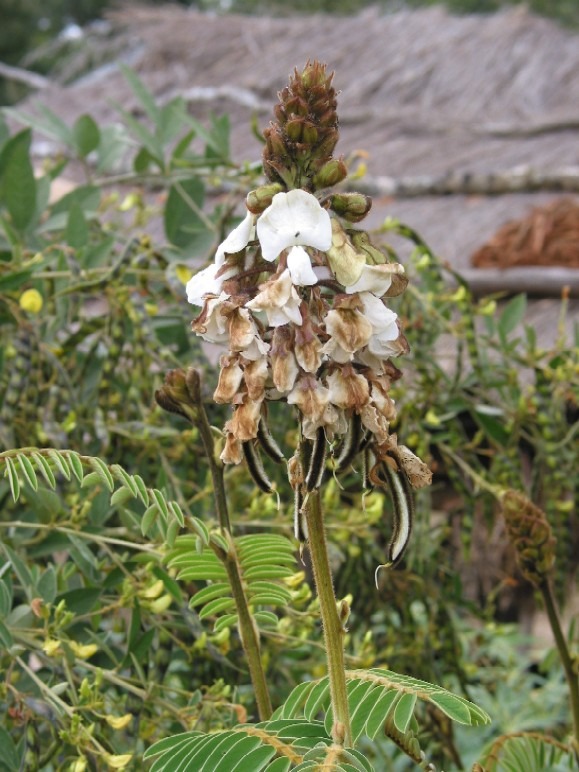Fact sheet about Tephrosia vogelii
Distribution and habitat
Tephrosia vogelii is indigenous to tropical Africa. It is found in widely varying habitats, including savannah-like vegetation, grasslands, forest margins, on farms and shrub lands, waste lands and fallow fields. It occurs in climates with annual rainfall of 850-2650 mm and annual mean temperature of 12.5-26.2°C and is found up to 2100 m altitude. It is encountered most abundantly where cultivated.
Flowering and fruiting habits
It is a soft, woody branching small tree or shrub with a dense foliage, up to 4 m tall. Stems and branches tomentose, hairy. Leaves are arranged spirally, imparipinnate, stipules up to 22 x 3.5 mm, rachis up to 25 cm long. Leaflets in 5-14 pairs, narrowly elliptical, up to 7 x 2 cm. Base acute to obtuse, apex rounded to emarginated. Inflorescence a terminal or axillary pseudo-raceme, 8-26 cm long. Basal bract leaf-like. Flower 18-26 mm long, white-purple-blue, fragrant, pedicel up to 23 mm long. The pods are linear, slightly turgid, up to 14 x 1.8 cm, brown or green, woolly to sericeous and 6-18 seeded. Seeds are dark brown to black, ellipsoid to kidney shaped, up to 7 x 5 mm.
Uses other than pesticidal
Soil fertiliser - T. vogelii is a known nitrogen-fixing species, cultivated as green manure in Indonesia and in many parts of Africa.
Other- It is also planted as a windbreak and as a temporary shade crop.
Propagation and cultivation
The seeds should be soaked in cold water for 24 hours before sowing to enhance germination. For maximum leaf yield 35,000 seeds can be sown per hectare.
Seed collection & Storage
Harvesting is done by shaking the branches and pulling the pods with a hook in order to release them on canvas spread on the ground. Pods should be dried in the sun for a few days, and then threshed in a gunny bag by using a stick. After extraction, the seeds are cleaned by sieving, winnowing or using a mechanical blower. Cleaned seeds are dried to moisture content between 6 and 10% prior to storage.
Seed storage behaviour is orthodox; viability can be maintained for several years in hermetic storage at 100C. Seed can also be stored for at least a year if kept dry and insect free through addition of ash.
Parts used
Leaves
Preparation
Crude extract by mixing 20 grams of fresh leaves with 100ml water. Soak for two hours away from direct sun, filter and spray.
More effective extract made by adding 5ml liquid soap to the above solution
Dried leaves
Uses
Surface application. Use immediately for optimum effectiveness. 24 hours later, effectiveness is reduced to 60-70%
Mixed with stored grains
Target organisms
Against ticks and worms in livestock
Against larval stages of mosquitoes, soft bodied insects and mites
Broad range of insects
Against bruchids

